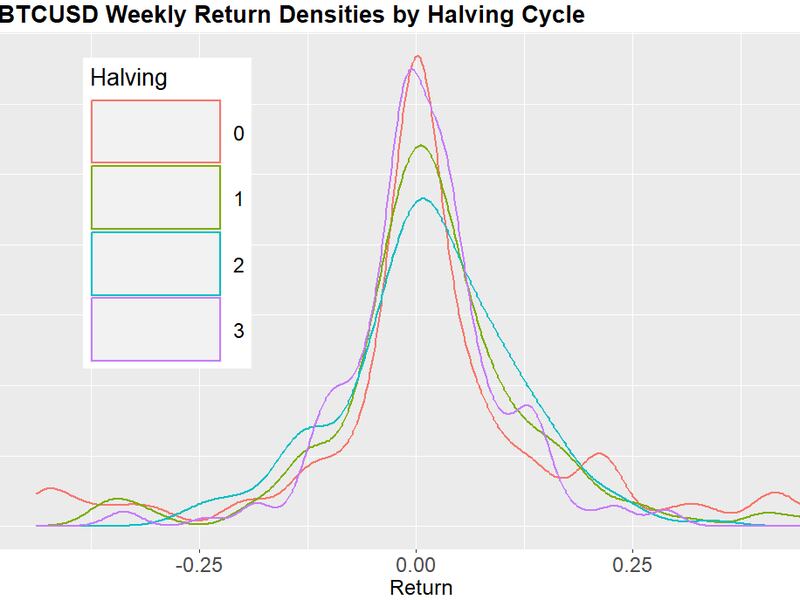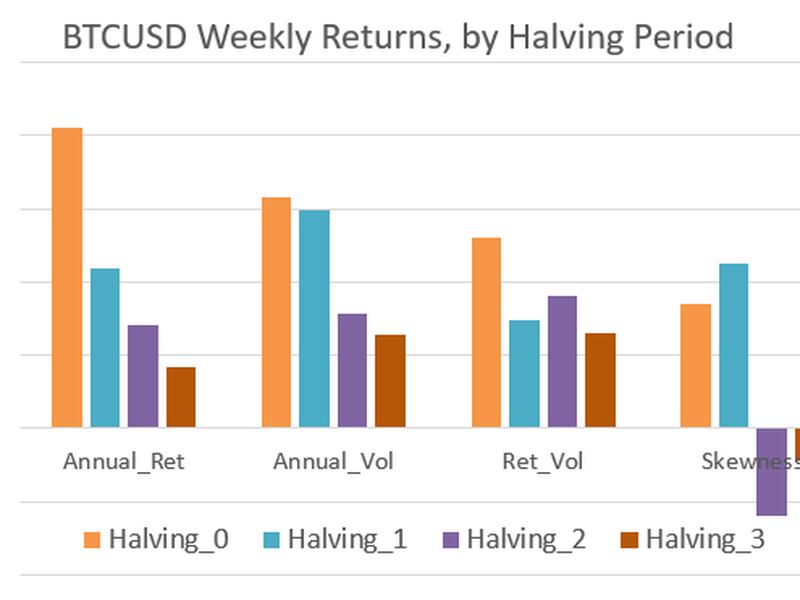How the ‘Halving’ Could Impact Bitcoin

The new entrants coming into Bitcoin via the recently launched ETF and prices bounce back up towards $50,000, it’s a good time to dig a bit into the Bitcoin halving, as we’re expected to go into another halving event in mid-April.
The Bitcoin halving cycle refers to the recurring event that reduces the blockchain rewards paid in bitcoin and given to miners for validating transactions and creating new blocks on the blockchain. This reduction occurs approximately every four years, specifically when the number of total blocks on the Bitcoin blockchain reaches a certain threshold, currently set at 210,000 blocks.
You're reading Crypto Long & Short, our weekly newsletter featuring insights, news and analysis for the professional investor. Sign up here to get it in your inbox every Wednesday.
The halving event aims to maintain the scarcity of Bitcoin by gradually decreasing the rate at which new Bitcoins are introduced into circulation. Ultimately, this process will result in a total of 21 million Bitcoins being mined, with no more Bitcoins being generated after the final halving event.
The general consensus is that Bitcoin halving events are positive for the price of Bitcoin, and historically they have been. The event often generates optimism among crypto investors, leading to positive price action afterward. This positive price movement can be attributed to several factors. Firstly, the reduction in the supply issuance rate emphasizes Bitcoin's scarcity, which can drive up demand and consequently increase its price.
Additionally, the halving event brings attention to the crypto space, attracting new investors and contributing to increased trading activity. However, it's important to note that while the halving historically has led to price increases, the magnitude of these increases may diminish with each subsequent halvings.
To look more closely into the effects Bitcoin halving periods have had on distribution of returns, we looked back from July 2010 to February 2024 utilizing the CoinDesk Indices Bitcoin XBX Price Index, and compare the distribution of weekly returns of each halving period as bitcoin increased in value from 0.1 to recent levels of 50k USD per BTC.

(Source: CoinDesk Indices, Investing.com)
July 2010 - October 2014 period utilizes BTCUSD pricing from Investing.com; Return outliers of 0.5% and 99.5% were removed for sake of distribution illustrative purposes.

(Source: CoinDesk Indices, Investing.com)
From the overlay of these distributions, and comparison of annual return and volatility, we can see that as the distribution of returns has narrowed as the bitcoin market has matured from a crypto enthusiast hobby to a real asset with institutional interest. This evolution can also be seen in the decrease in both returns and volatility over each subsequent halving, while Return per Volatility has held more constant after the first halving. This evolution suggests that investors should not expect similar performance gains in Bitcoin that were experienced when the market was in its early stages prior to 2012.
One area of the market that is directly affected by the halving event is the Bitcoin miners, via an immediate halving of block rewards for new blocks. This reduction in mining rewards can impact miners' revenue and profitability, as miners could face increased competition and higher operational costs, potentially leading to consolidation within the mining sector. Smaller miners may struggle to remain profitable, while larger players with greater resources, cheaper sources of electricity and economies of scale may dominate the industry.
Looking beyond the halving events, the future of Bitcoin mining will eventually transition to relying solely on transaction fees once all 21 million Bitcoins have been mined. This shift will occur approximately 31 years after Bitcoin's inception. Miners will need to adapt to this change towards relying solely on transaction fees, although this will be a gradual change from each halving.
Innovations in the crypto space, such as additional protocols and tokens that coexist alongside Bitcoin (e.g. Ordinals), may provide opportunities for miners to diversify and optimize their mining operations to maintain revenue beyond Bitcoin block rewards.
We’ve come a long way in the evolution of Bitcoin from a cypherpunk and cryptography enthusiast hobby to a digitally-scarce store of value with its own spot ETFs and regulated derivative markets. That said, through market cycles, and increases in market capitalization, the volatility of the asset has decreased. So we should taper our expectations when analyzing historical halving cycles, as Bitcoin holders today are very different from holders in 2010.








